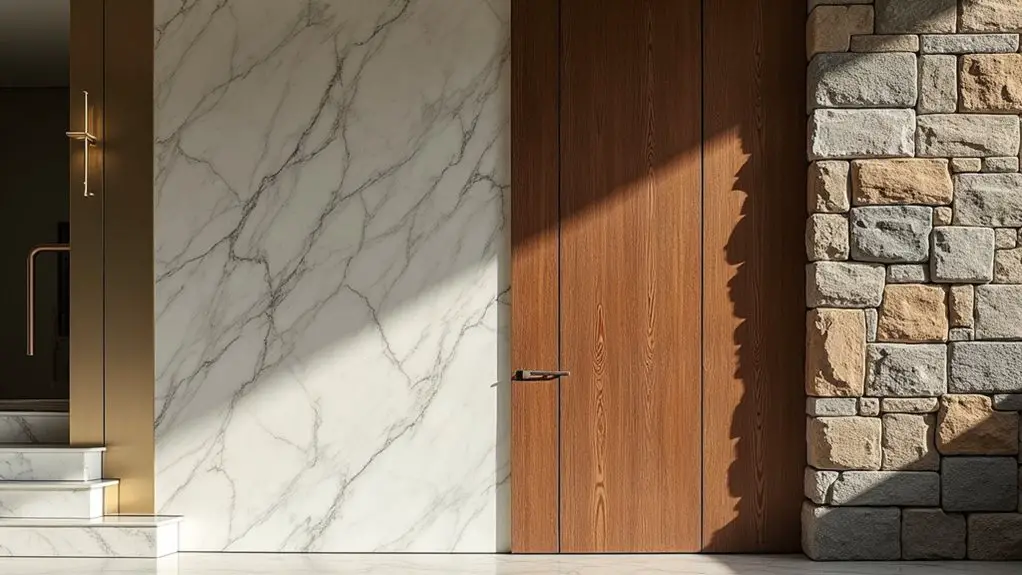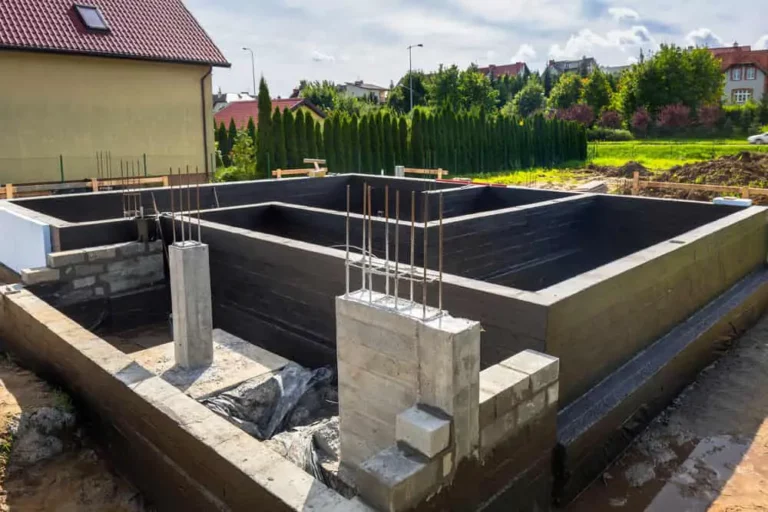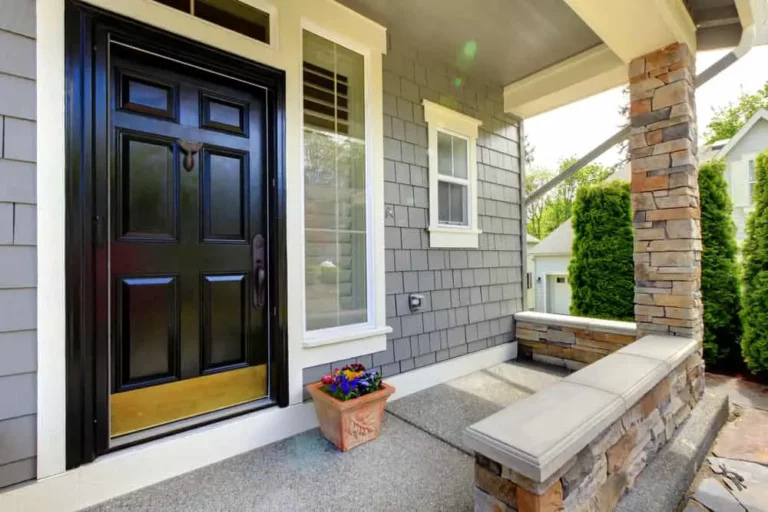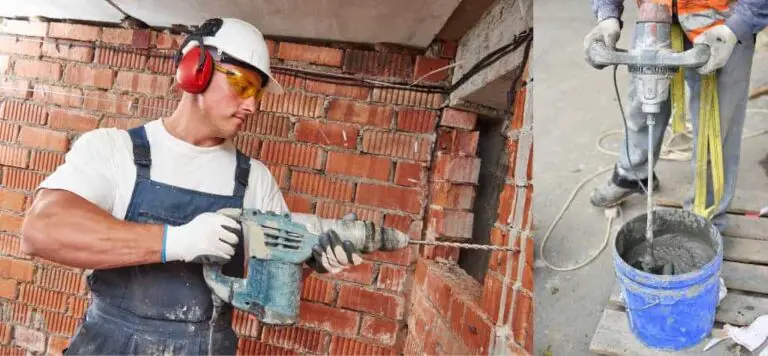Durability vs. Cost: What Really Matters When Choosing Materials?

When it comes to selecting construction materials, you've likely weighed durability against cost. While saving money upfront can be tempting, it often leads to unexpected expenses in maintenance and replacements down the line. The challenge lies in balancing immediate costs with the long-term benefits of robust materials. Are you ready to explore how your choices can impact both your project's budget and its sustainability?
Understanding Material Durability
When you choose materials for a project, understanding their durability is vital, especially if you're aiming for long-term performance. Environmental factors like temperature fluctuations can cause materials to crack, while moisture exposure hastens corrosion, particularly in reinforced concrete. It's important to take into account freeze-thaw resistance in colder climates and abrasion resistance, as tested by ASTM C 131—higher durability means a longer lifespan. Remember, materials with better chemical resistance, especially against alkali-silica reaction and chloride, excel in adverse environments like coastal areas. Low permeability is key too, blocking harmful moisture and chemicals. By selecting materials that adapt to your specific conditions, you'll guarantee your project stands strong and looks great for years to come, fulfilling the community's needs. Additionally, durability of aggregates plays a crucial role in defining the overall longevity of concrete structures, ensuring they withstand environmental stressors.
Cost Considerations in Material Selection
Durability plays a significant role in material selection, but cost considerations can't be overlooked. When you're choosing materials, it's essential to think about the total life cycle costs, including acquisition, operation, and maintenance. Sometimes, investing in higher initial materials can save you money down the line through their durability and efficiency. Consider alternatives like recycled materials or composites that offer similar performance without breaking the bank. Exploring bulk purchasing discounts and local sourcing can also keep costs in check. Plus, standardizing materials can streamline your processes and reduce complexity. By embracing these strategies, you'll not only stay within budget but also foster a sense of community by making smarter, eco-friendly choices. Additionally, effective material selection can align with mechanical properties to enhance product durability and reduce long-term costs.
The Role of Maintenance in Long-term Savings
Although maintenance might seem like just another expense, it plays an essential role in achieving long-term savings. By choosing durable materials, like recycled steel or energy-efficient windows, you lower replacement needs and reduce repair costs over time. With sustainable designs, you enjoy operational efficiency that cuts energy consumption, leading to lower utility bills. Smart systems and modular construction simplify maintenance, allowing for easier repairs and less downtime. Emphasizing low-maintenance investments means your property retains value, and you'll experience a tangible return on investment. Additionally, the long-term savings associated with sustainable materials further enhance your financial benefits. By prioritizing smart material choices and maintenance, you foster a community that values both sustainability and practicality in building solutions, ensuring you feel at home while saving money for years to come.
Environmental Impact of Construction Materials
As you consider the materials for your construction project, understanding their environmental impact becomes essential. Every material carries a carbon footprint, with concrete alone contributing to 8% of global CO₂ emissions. The extraction and production processes disrupt ecosystems and deplete crucial resources, which can harm biodiversity. Additionally, construction sites can pollute waterways, threatening both aquatic life and our drinking water. With significant waste generated—569 tons in the U.S. alone—efforts to recycle materials often fall short. Embracing sustainable alternatives like bamboo or recycled plastics not only helps reduce emissions but also fosters a healthier planet. Construction activities can significantly impact nearby bodies of water, and you're not just choosing materials; you're making a difference for your community and the environment. Let's create a sustainable future together!
Comparing Traditional and Modern Materials
When choosing between traditional and modern materials for construction, it's essential to weigh their unique characteristics and benefits. Traditional materials like stone, brick, and wood offer durability and a timeless feel but can demand high maintenance and labor costs over time. Modern options, such as engineered composites and self-healing concrete, provide innovative solutions with reduced upkeep and increased strength. Although you might face higher initial investments, the long-term savings through energy efficiency and lower maintenance can be worth it. Consider your project's needs and local environment: traditional materials shine in heritage contexts, while modern materials excel in urban and seismic areas. Everyone deserves a space that reflects their values and guarantees durability, regardless of material choice.
The Importance of Aesthetic Appeal
Aesthetic appeal plays an essential role in material selection, often determining how spaces are perceived and experienced. When you choose materials, you're not just focusing on durability; you're creating an atmosphere that resonates with your values and style. Options like electropolished stainless steel can add that mirror-like luxury, yet they come with increased costs. Your choices also reflect who you are—natural materials like wood provide warmth and authenticity, but may demand more maintenance. Remember, the textures and colors you select can influence not only the look but also the tactile experience of a space. Ultimately, striking the right balance between beauty and functionality helps foster a sense of community and belonging around you. Additionally, electropolishing enhances surface shine, which can elevate the overall aesthetic of metal materials in your designs.
Evaluating Hybrid Material Applications
Evaluating hybrid material applications requires a nuanced understanding of how different materials interact and perform together. When you combine carbon and glass fibers, for instance, you can achieve remarkable tensile strength while keeping costs manageable. These hybrids excel, particularly when carbon fiber is placed strategically in the design. Their fatigue resistance is impressive too, enduring over a billion cycles, which far exceeds traditional materials. However, it's crucial to examine the balance of cost versus performance, as even slight changes in fiber ratios can shift financial viability. To truly optimize your designs, keep in mind how stacking order and dispersion affect strength and efficiency. Moreover, hybrid composites enhance mechanical properties while reducing overall density. Ultimately, this thoughtful approach to material synergy can lead to innovative solutions that meet your needs while fostering a sense of community in design.
Long-term Value vs. Short-term Savings
While opting for lower-cost materials might seem tempting in the short term, it's essential to recognize the potential long-term ramifications of such choices. These cheaper options often lead to frequent replacements and higher maintenance costs, which can erode those initial savings. Investing in durable materials might require a higher upfront cost, but it pays off in the long run by minimizing repairs and operational disruptions. Short-term financing is suitable for immediate needs, but making wise material choices now can eliminate cash flow fluctuations in the future.
You'll find that industries like healthcare and technology demonstrate a clear trend: quality often translates to reliability, reducing future expenses. Avoiding low-end materials means better risk management and enhanced brand reputation. Ultimately, considering the bigger picture helps you cultivate a future-proofed investment that aligns with your goals and sense of community.
Sustainability Goals and Material Choices
As you embrace sustainability goals in your projects, the choice of materials plays an essential role in minimizing environmental impact. You'll want to focus on characteristics that promote sustainability:
- Recyclability and reuse potential: Opt for materials like recycled steel and reclaimed wood.
- Low embodied carbon: Choose bamboo or mass timber to reduce carbon emissions.
- Biodegradability: Incorporate natural materials like rammed earth and cork for safer degradation.
- Resource efficiency: Select locally sourced materials to cut transportation emissions. Sustainable materials significantly reduce the carbon emissions associated with the construction process.
Aligning your material choices with these characteristics not only supports the planet but also fosters a community that values responsible practices. By prioritizing sustainability, you contribute to a healthier environment for yourself and future generations. Together, we can make a difference.
Future Trends in Construction Material Selection
Given the rapid advancements in technology and material science, the future of construction material selection is poised for significant transformation. You'll likely see 3D-printed concrete emerge, allowing for bespoke mixes and efficiency through digital design tools. Innovations such as microbial concrete pave the way for self-healing structures, offering low maintenance costs. The rise of materials like transparent aluminum and phase-change materials (PCMs) combines aesthetic appeal with energy efficiency. As sustainability becomes key, hempcrete's lightweight properties and carbon sequestration benefits will catch your eye. Additionally, adopting local manufacturing and IoT technology will streamline your supply chains. These trends aren't just about materials; they represent a community-focused shift toward smarter, sustainable building practices that connect us all. Eco-friendly structures and practices will be critical as the construction industry faces increased scrutiny over environmental impacts.





